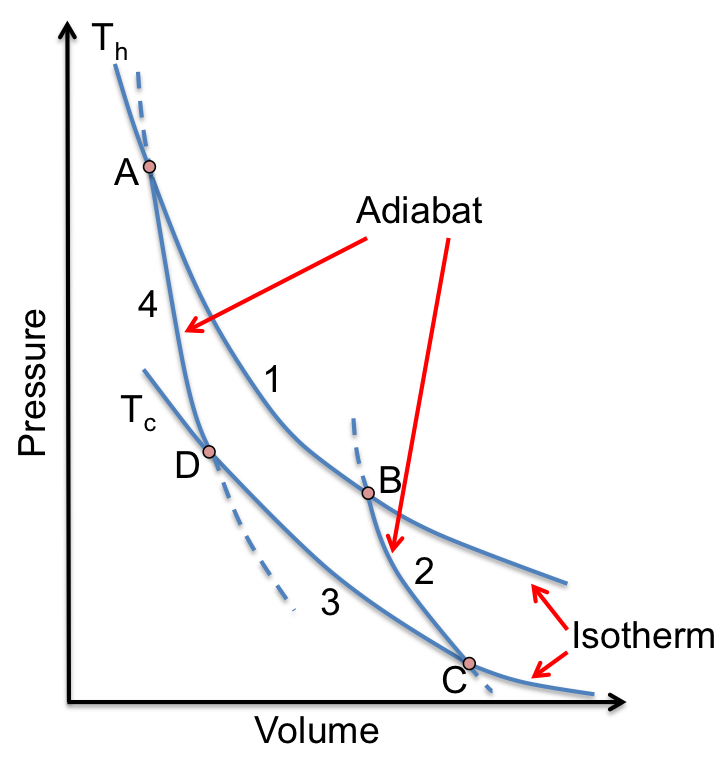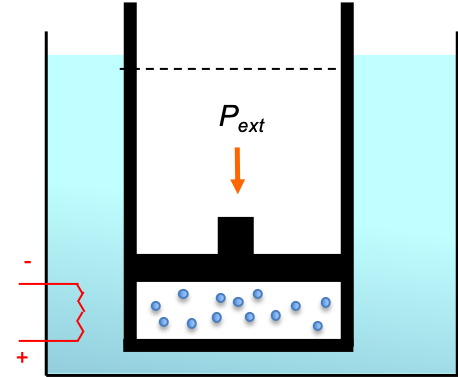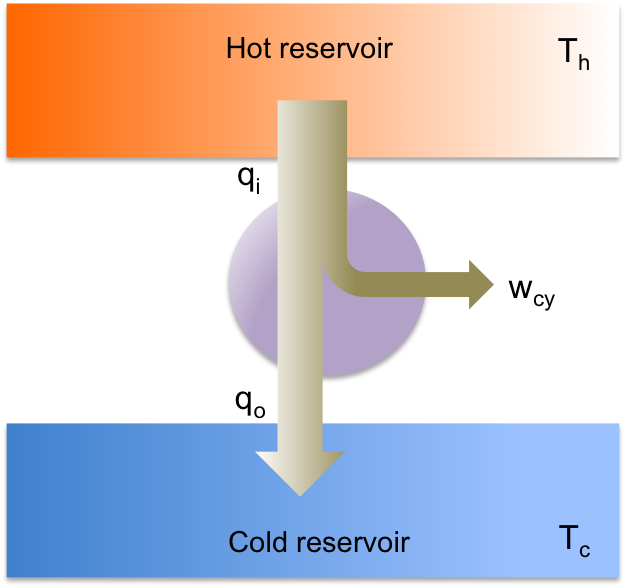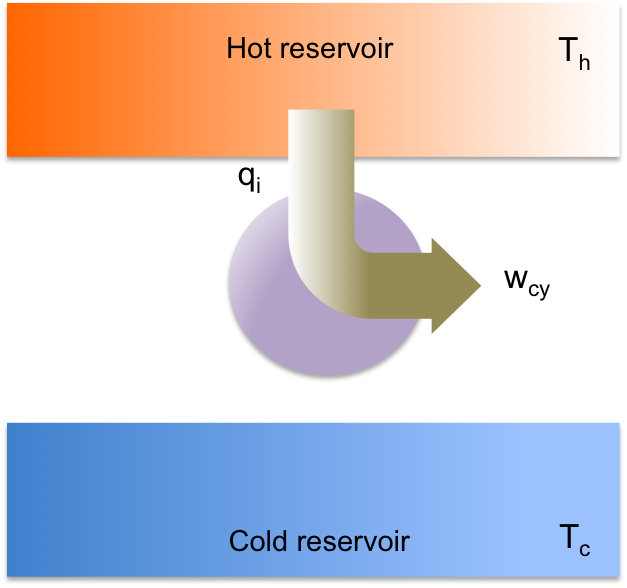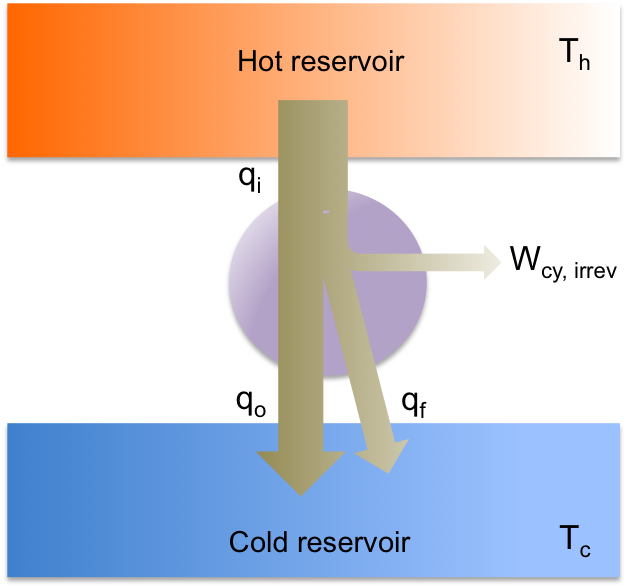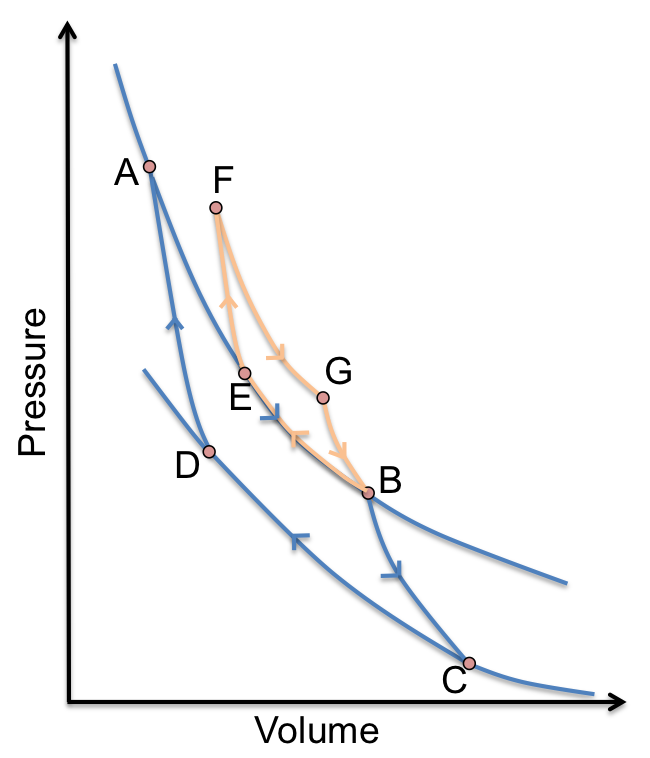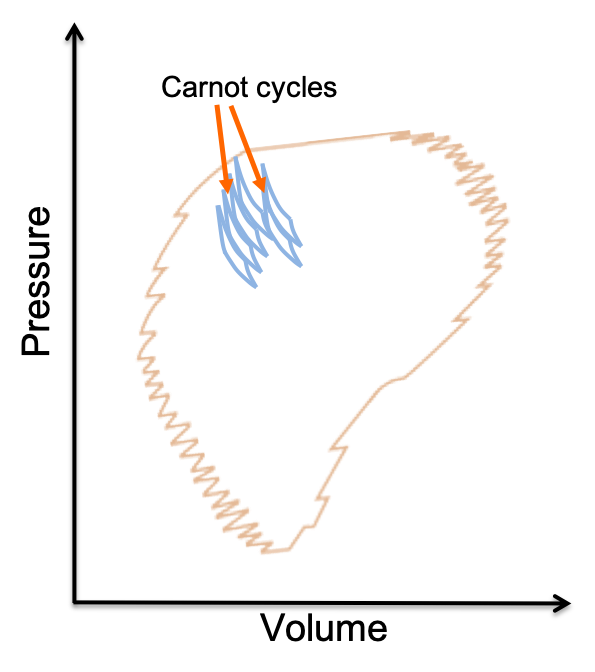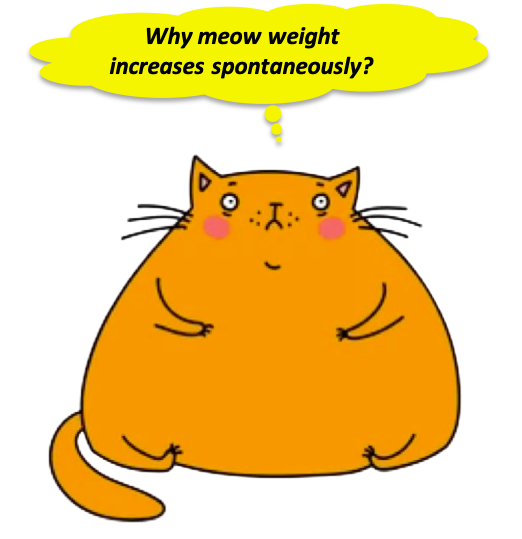Entropy is a state function , whose differential is expressed as
.

With reference to eq98, for a reversible cycle. Dividing eq98 by ,
Substituting the definition of from the first law of thermodynamics in eq116:
We have shown in an earlier article that is an exact differential for an ideal gas. Since the line integral of any exact differential involved in a cyclic process is zero,
The function appears to be the differential of a state function. If it is, we must prove that eq118 applies to any working substance, not just an ideal gas. The proof follows the same logic as the proof that eq98 is applicable to any working substance in a Carnot engine. This is accomplished by replacing
with
and repeating the steps from eq99 through eq105. We call this new state function, entropy,
:

Question
Is eq119 applicable to irreversible processes? If not, is that in conflict with the fact that is a state function, in which its change
is path-independent?
Answer
Eq119 is only applicable to reversible processes. It is often written as , or its integral form
. In other words,
can only be calculated by integrating
for a reversible process, even though
is a state function. Furthermore,
is only applicable to a reversible process in a closed system, as
is poorly defined for an open system. However, we can still calculate
for an irreversible process using eq119 if we can find a reversible process or a combination of reversible processes from point A to point B.
Note that in eq119 is the same for both the system and the reservoir (surroundings) for a reversible process. For a closed system undergoing reversible processes, we can substitute eq119 in the differential form of eq24 to give
If only pV work is involved,
Similarly, we can compute for an irreversible process if we can find a reversible process or a combination of reversible processes from point A to point B. Eq121, which is the combination of the first and second laws of thermodynamics, is called the fundamental equation of thermodynamics.

Question
Under what circumstances is ?
Answer
From eq119, for a process occurring in the surroundings. If the surroundings is a constant pressure reservoir,
, where
is a constant. Since both
and
are state functions, we can express the integral form of
as
.

Question
Show that .
Answer
Rearranging eq121 gives:
Substituting the total differential into eq122 yields:
Comparing eq123 with the total differential results in:
Since is a state function, the order of differentiation does not matter:
Substituting eq124 into eq125 gives:
Carrying out the derivatives yields:
Multiplying eq126 throughout by and rearranging results in:




